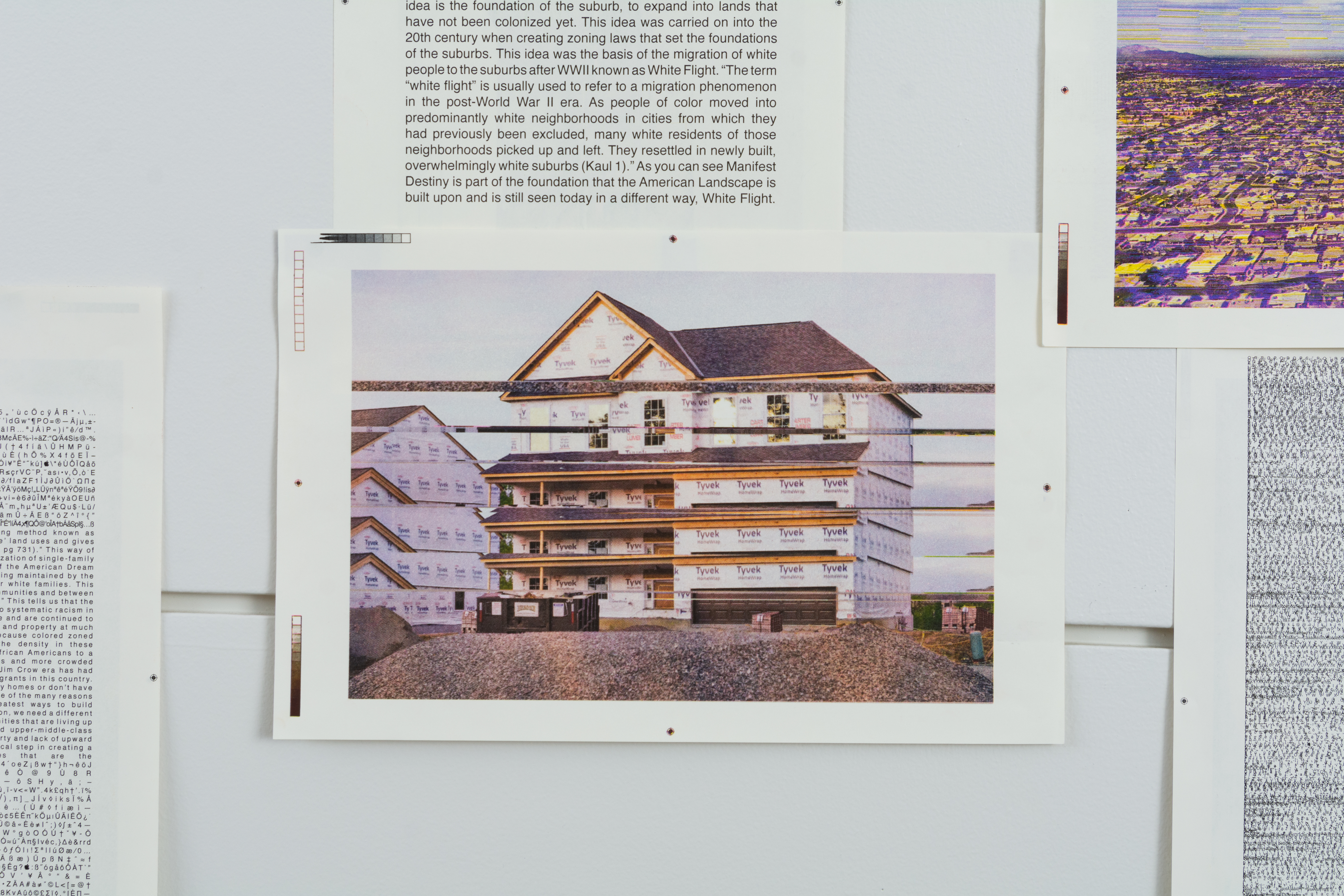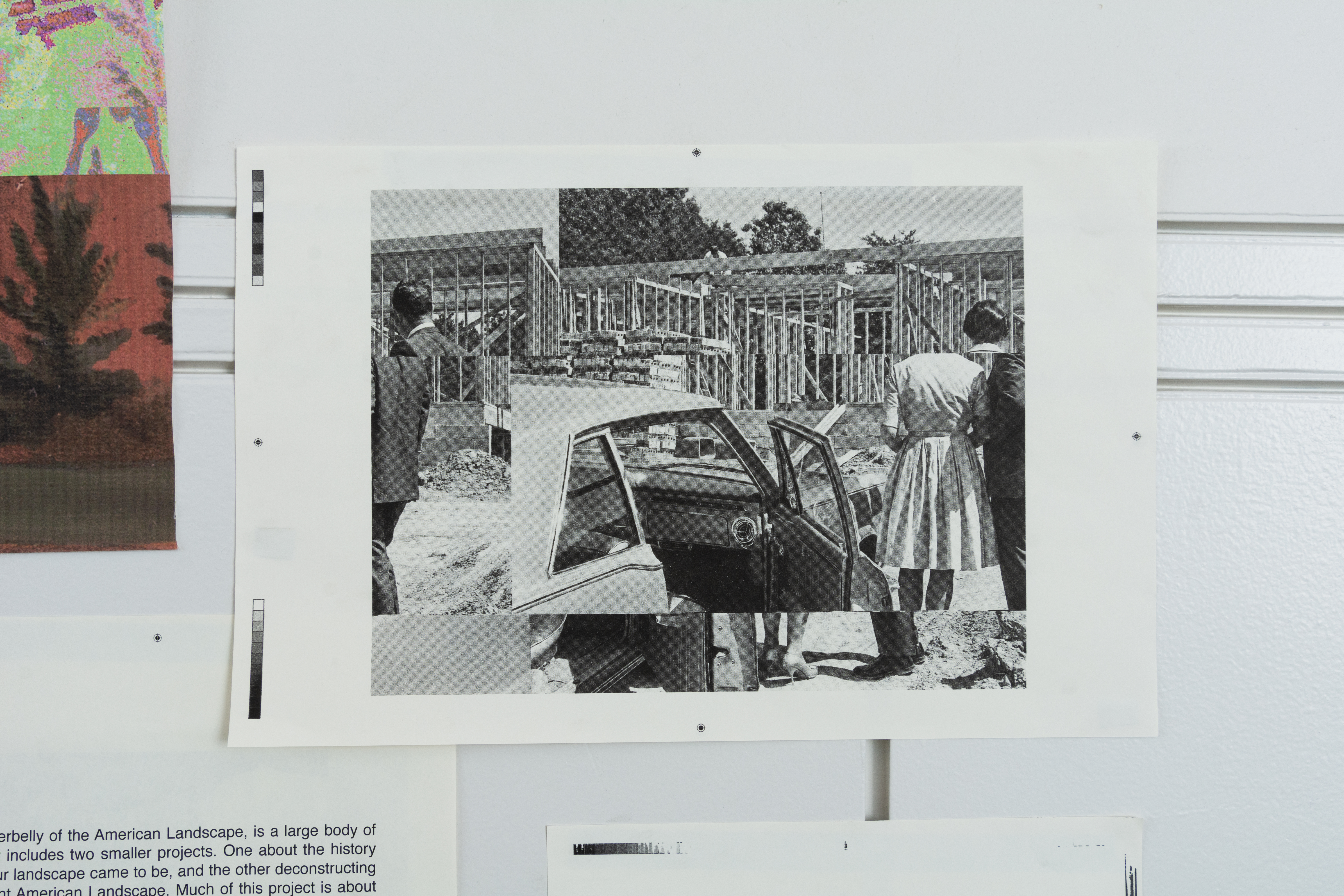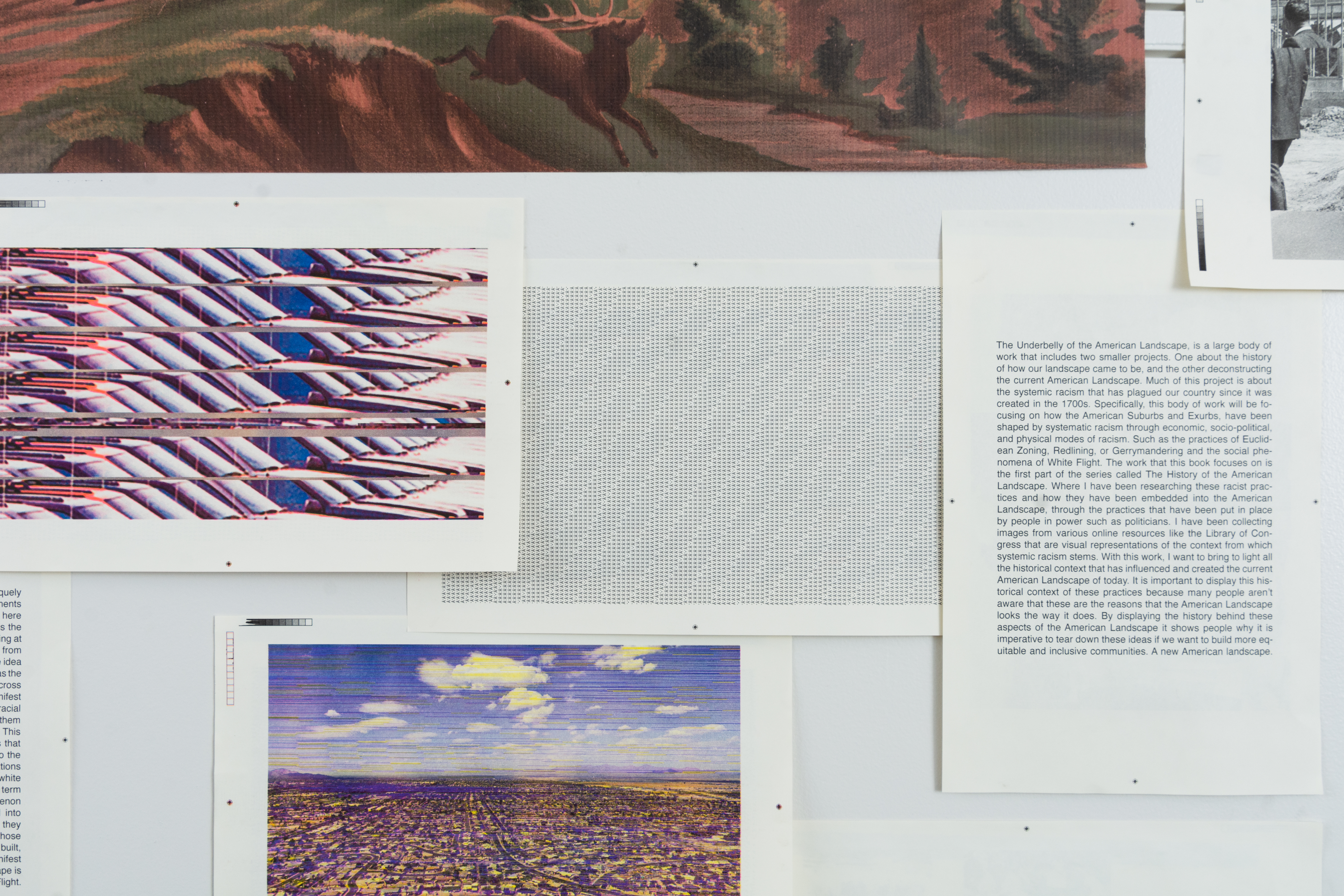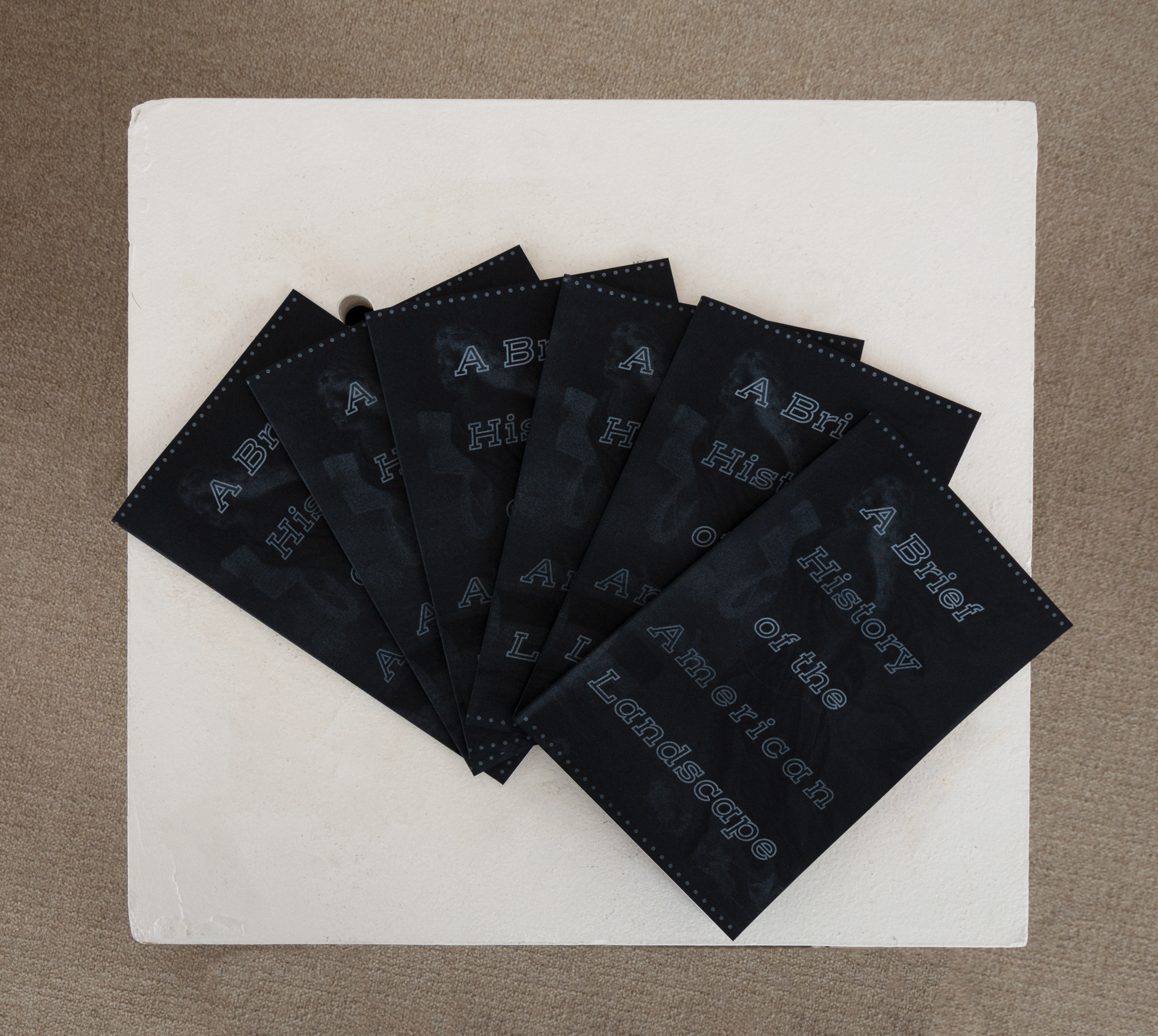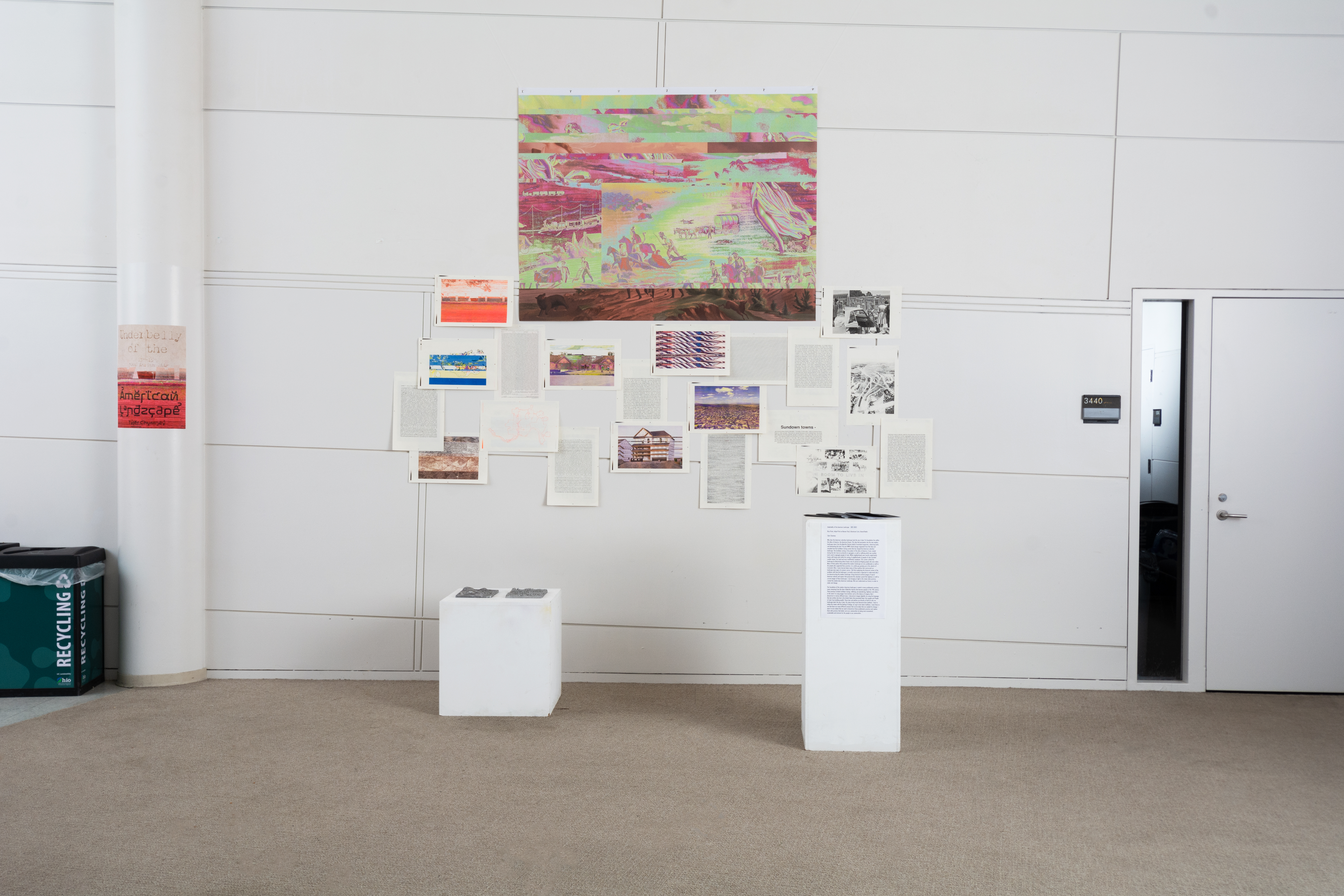
Underbelly of the
American Landscape
Riso Prints, Inkjet Print on Banner Vinyl, Aluminum Casts, Bound Books
Why does the American suburban landscape look the way it does? Its foundation lies within the ethos of America, the American Dream. This idea that permeates into the new modern landscape stems from the Manifest Destiny belief of westward expansion, colonizing lands, and dominating the land. The post WWII suburb design originated from that idea and morphed into the Euclidean Zoning system that has shaped the American suburban landscape. The Euclidean zoning is the product of the ethos of America. It was created during the Jim Crow era primarily to segregate, as well as redlining which was another tactic used to segregate people of color. White neighborhoods were mostly single-family homes with large yards while the zoning of neighborhoods of people of color included smaller homes, less land and more multifamily complexes. This system crafted the landscape by determining where homes may be placed privileging people who were white. Many of these polices that produced the modern landscape are very problematic as well as the people who supported these practices. As a white guy growing up in the suburbs of Cincinnati, Ohio, I never learned about many of these policies that constructed our landscape were apart of systemic racism. I felt that explaining the historical context of the problems with how the landscape is currently constructed is important to understand why I am deconstructing the modern landscape. Using historical archival images of typical American suburbs and aspects that purpurate the suburban sprawl like highways as well as current images of these landscapes. I am bringing to light to the viewer what practices created the modern-day American Landscape. We must understand our history in order to make real change. The foundation of the modern American landscape is rooted in many problematic practices, many stemming from the idea of Manifest destiny that become popular in the 19th century. These practices include Euclidean Zoning, redlining, jerrymandering, highways and others. In this work I’m using images from Archives such as the Library of Congress that I deconstruct in various different ways. I deconstruct images digitally, by using the language that was written into law in the United States that prevented lower class people and People of Color from building wealth. These laws and policies are directly at fault for why our landscape looks the way it does. By using strong visual deconstruction methods, I want to imbue the viewer with the feeling of change, an urge to tear down traditions. I want them to see that there are many different avenues that can be taken that are needed for change. I want it to be evident that we need to deconstruct these problematic practices and replace them with practices that better serve our communities by being more economical, sustainable and inclusive for the people in our communities.


